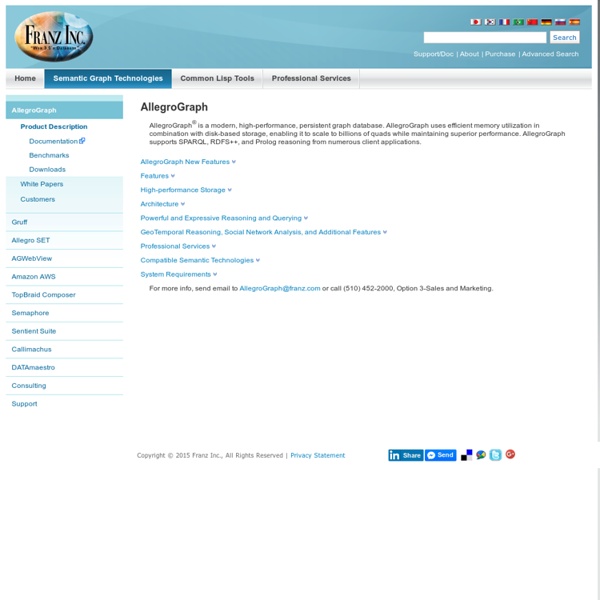Semantic Web
The promise of web standards W3C standards define an open web platform for application development. The web has the unprecedented potential to enable developers to build rich interactive experiences, that can be available on any device. The platform continues to expand, but web users have long ago rallied around HTML as the cornerstone of the web. Read more about W3C Standards Why W3C web standards? W3C publishes recommendations, that are considered web standards. W3C develops technical specifications according to the W3C Process, which is designed to maximize consensus, ensure quality, earn endorsement and adoption by W3C Members and the broader community. W3C web standards are optimized for interoperability, security, privacy, web accessibility, and internationalization. W3C's proven web standards process is based on fairness, openness, royalty-free, we make the web work, for everyone. Value of creating standards at W3C Wide array of applications
Mark Watson, Ruby and Java Consultant and Author
RDF - Semantic Web Standards
Overview RDF is a standard model for data interchange on the Web. RDF has features that facilitate data merging even if the underlying schemas differ, and it specifically supports the evolution of schemas over time without requiring all the data consumers to be changed. RDF extends the linking structure of the Web to use URIs to name the relationship between things as well as the two ends of the link (this is usually referred to as a “triple”). Using this simple model, it allows structured and semi-structured data to be mixed, exposed, and shared across different applications. This linking structure forms a directed, labeled graph, where the edges represent the named link between two resources, represented by the graph nodes. Recommended Reading The RDF 1.1 specification consists of a suite of W3C Recommendations and Working Group Notes, published in 2014. A number of textbooks have been published on RDF and on Semantic Web in general. Discussions on a possible next version of RDF
SPARQL Query Language for RDF
W3C Recommendation 15 January 2008 New Version Available: SPARQL 1.1 (Document Status Update, 26 March 2013) The SPARQL Working Group has produced a W3C Recommendation for a new version of SPARQL which adds features to this 2008 version. This version: Latest version: Previous version: Editors: Eric Prud'hommeaux, W3C <eric@w3.org> Andy Seaborne, Hewlett-Packard Laboratories, Bristol <andy.seaborne@hp.com> Please refer to the errata for this document, which may include some normative corrections. See also translations. Copyright © 2006-2007 W3C® (MIT, ERCIM, Keio), All Rights Reserved. Abstract RDF is a directed, labeled graph data format for representing information in the Web. Status of This Document This section describes the status of this document at the time of its publication. This is a W3C Recommendation. Appendices 1 Introduction Data: Query: ? ? ? ?
Virtuoso Facets Web Service
What The Virtuoso Facets web service is a general purpose RDF query facility for facet based browsing. It takes an XML description of the desired view, and generates the reply as an XML tree containing the requested data. The user agent or a local web page can use XSLT for rendering this for the end user. Why The selection of facets and values is represented as an XML tree. How The top element of the tree is <query>. The <query> element has the following attributes: The result is a tree of the form: <facets xmlns=" datatype="..." shortform="..." xml:lang=" By convention, the first column is the subject selected by the view element, typically a URI; the second is a label of the URI; and the third, if present, is either a count or a search summary. The first column's text child is the text form of the value. The query has the top level element <query>. A facet query contains a single view element. The type can be: Customizing Related
mark-watson/java_practical_semantic_web - GitHub




allegrograph - high performance commercial rdf datastore, free upto 50 million tuples by balamurugan Dec 8